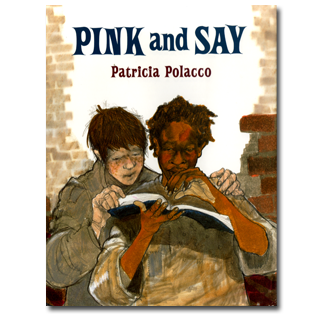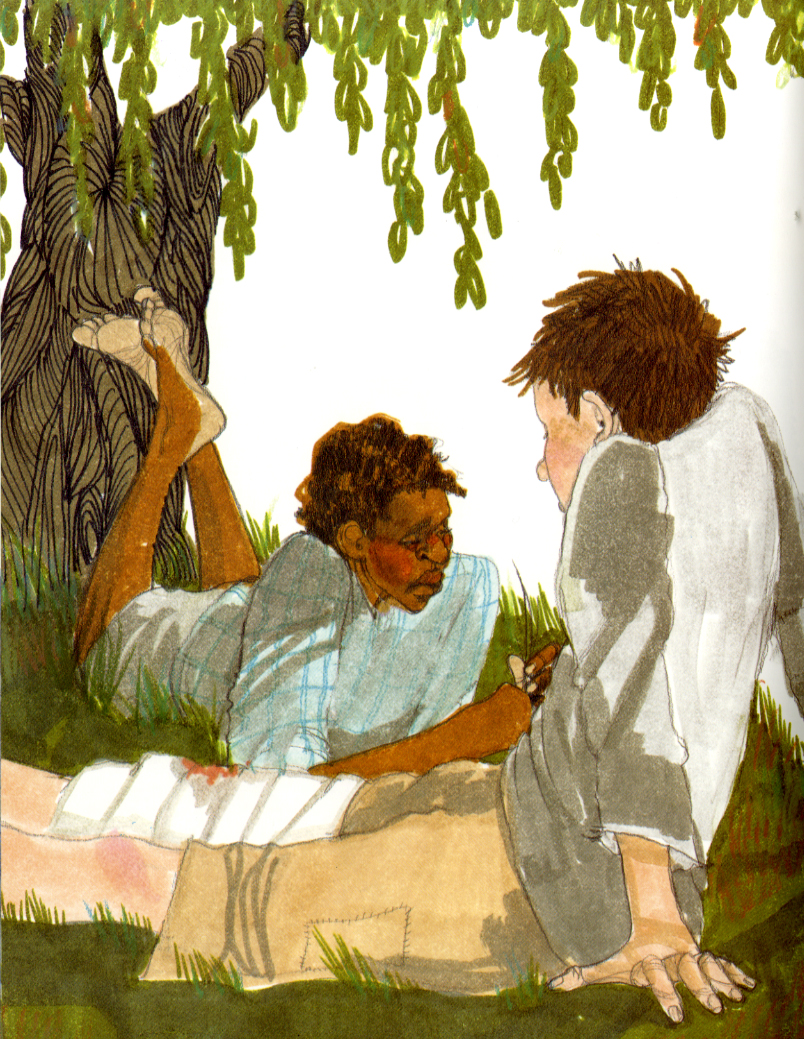
A FEW OTHER EVENTS FOR
JUNE 22:
- It’s the birth date of Margaret Sidney (1844-1924), Five Little Peppers and How They Grew.
- In 1873, Prince Edward Island joins Canada. Read the Anne of Green Gables series by L. M. Montgomery.
- In 1970, eighteen-year-olds in the United States are granted right to vote in national elections. Read Vote! By Eileen Christelow; If I Ran for President by Catherine Stier, illustrated by Lynne Avril; and See How They Run: Campaign Dreams, Election Schemes, and the Race to the White House by Susan E. Goodman, illustrated by Elwood H. Smith.
- It’s National Chocolate Éclair Day.
In April of 2011 the five-year-long Sesquicentennial of the Civil War began; the Civil War Trust has an excellent website of resources. Over this period of time, we’ll be given hundreds, probably thousands, of new resources to use with children to explore the War Between the States. But if I were going to start observing this milestone in American history with children four through twelve, I would first share a book published in 1994,  Pink and Say by Patricia Polacco.
Some writers go for intellect; some for the heart. Patricia Polacco has always been in the latter category. Because she weaves her stories out of her love for family and history, they resonate emotionally. Since her first book in the eighties until today, she has crafted dozens of great titles. Many readers adore Thank You, Mr. Falker. Others love The Keeping Quilt. But for me, if I could only take one Patricia Polacco title to a desert island, I’d scoop up Pink and Say. After all, even on a desert island you might want to cry from time to time!
Based on a true story passed down in her family, Polacco tells the saga of her ancestor, a Yankee soldier who was rescued after a battle in Georgia and nursed back to health by a young black soldier of the 48th Regiment Infantry U.S. Colored Troops. For a time, Say (Sheldon Russell Curtis) stays with Pink (Pinkus Aylee) and his mother. After her death at the hands of Confederates, they flee—only to be captured and sent to Andersonville. There Pink is hanged, hours after arriving; Say returns to his Ohio home and his ancestors keep alive the story of this remarkable friendship. Pink, of course, has no living descendants. Polacco ends the book, “When you read this, before you put this book down, say his name out loud and vow to remember him always.”
There should be a statute of limitations on the number of times that you cry when reading a book. My first encounter with Pink and Say came in 1994 when I first read it in my office at Horn Book; I closed the door and sobbed. I have used this book with classes many times in the last seventeen years. And yet, each time, even though I know what will happen, the text has the same effect.
In forty-eight pages Patricia Polacco brings children into the loss and heartache of the Civil War. She shows the devastation of that war on its citizens. She brings to life two human boys who seem so real they might live near us. How do we make the Civil War come alive for young readers? By re-creating the human beings who experienced these events—just as Patricia Polacco does in Pink and Say.
Here’s a page from Pink and Say:
As we rested under the willow tree, Pink asked me about my family back home.
“Got one brother still at home to help run the place fer Pa,” I answered.
“What was your outfit again?” Pink asked. He’d asked me before.
“Ohio Twenty-fourth. I carried the staff. Wasn’t supposed to carry a gun, but then so many died, even us boys had to carry after so many were slaughtered like hogs.”
Originally posted June 22, 2011. Updated for .














Love Polacco as well. For me it’s MY OL’ MAN, but all of her narratives are rich in emotion – and her style of illustration is wonderful too – a bit raw with flashes of color. She’s a gift to the children’s literature community.
love love love “Thank you, Mr. Falker.” You are hitting on all the books I’ve avoided for some reason…and I bet I can find a moment to read this one today.
Thanks,
Suzi
Suzi: Do take a moment to read this today — not a book you want to avoid. However, just keep handkerchief nearby!
I bought this book at our library’s annual 4th of July used book sale last year. I came home and I think it was a few weeks before I picked it up to read it. I was standing in the kitchen making coffee and I remember just starting to sob. It’s such a beautiful book, and those words you quoted have stuck with me since that moment.
My girls are still too young for the themes in this book, and I know they’ll have to wait until they’re old enough to read it by themselves before they can experience it, because I’ll never be able to read it aloud without crying.
It’s truly beautiful.
Star: Thanks for your comment. I’m so glad I am not alone on the crying about this book! It gets me every time.
oh no, you’re not alone. I can’t even think about it without getting a bit choked up. I always used Polacco in our writing workshops with second-fourth graders to model all kinds of things about the power of language. One year my class was so taken with her that we launched an entire author study – she is fascinating. She’s a gift to the children’s lit community and to teachers everywhere!
Alright now. Anita’s my children’s book idol, and I love her for it, and all, but I ain’t gonna read no book today that is going to make me weep. Nope. Not to day. (Sorry about mangling the grammar.)
As a well known Civil War novel line goes: “I’ll think about that tomorrow”
But I will read it.
Someday.
Promise.
I always cry when I read this book, even when I am reading out loud to students. It’s so beautifully sad, and it brings the Civil War into children’s minds in a powerful way.
Gordon: I understand. But thanks for considering the book!
Books that make me cry are the books I know sunk into my heart. I haven’t heard of this one. Thank you for sharing about it, Anita.
I love your words, “There should be a statute of limitations on the number of times that you cry when reading a book.”. I was just telling my aunt about how I cry every time I read the ending of Stone Fox, Charlotte’s Web, the Miraculous Journey of Edward Tulane…and many more to my students. Each year I tell myself that I am not going to cry because I know how the books end., but I get so caught up in the emotions of the story I can’t help it…I do! Patricia Polacco is a master story teller and I agree that Pink and Say is one of her most powerful stories.
I’ve put this book on hold at the library and will pick it up tomorrow.
My original post was in part a small amount of humor, but I now realize that it was an unconscious reaction from a very recent trip to a Civil War battle ground in Northwest Arkansas. The Battle of Pea Ridge was a major engagement with about 3600 wounded and killed in less than three days.
While I was there, heavy thunderstorms struck. The thunder, lightening and wind made me think of canon fire and raging battle, and as I slowly rounded the viewing road alone, I imagined I could hear voices crying out across the fields and from woods. Voices of human pain and suffering.
I looked over fields once literally flooded with blood. Some of that blood was left by twelve year old children with guns. It was a bitter winter and some of them had no shoes. Little boys who never took a breath again. I was depressed for two hours (a form of crying?) over the senseless horrifying insanity set loose on that ground.
Thank you Anita and Rebecca.
We’re going to do some additional author studies in 2nd grade next year and I think Patricia Polacco will be perfect.
Barb: I always say that Polacco makes the perfect author’s study. There’s a wide variety in her books, and she has been very honest about the personal details that underscore her work.
I read this for a Children’s Lit class last semester. It made a big impact on me- such a beautiful story. I love the last page! Thanks for passing on this powerful testimony!